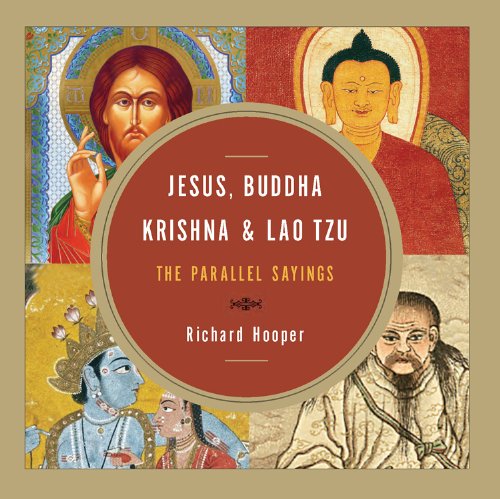
In this fascinating volume, theologian and philosopher Richard Hooper reveals the common spiritual threads of the world’s great religious traditions.
Hooper organizes hundreds of sayings attributed to Jesus, Buddha, Krishna and Lao Tzu thematically and assembles these parallel sayings into four columns for easy reference. Culled from more than fifty ancient Christian, Buddhist, Hindu and Taoist texts, Jesus, Buddha, Krishna, and Lao Tzu includes topics such as, “The Great Way, “Suffering,” and more.
Each topic includes an insightful introduction that sends a powerful message that will be welcomed by all who seek the truth within, and within their own spiritual tradition.

heavy on Gnosticism was hoping, at the time I bought this book, to see quotes from the canonical scriptures, but this book quotes Jesus more from the gnostic texts than from the official canon… that’s all…
What a gorgeous work! What a gorgeous, meditative work of art this book is! Every time I sit down with it to read a section or two, I feel like I’ve gone on a personal tranquility retreat. I’m in awe of not only the parallels of wisdom between the world’s religious teachings, but how it was possible to find them all and bring them together. The stunning photography and author’s comments makes this book much more than a book of quotes and ancient teachings, but rather a beautiful perspective on why we are here in this world.
Insightful and enlightening I have often thought that an A-B-C comparison of Christianity, Judaism, and Islam would be an interesting read; especially in these times. This book isn’t that, but the A-B-C-D column comparison format of the teachings of these religeous icons seemed ideal for presenting a quick understanding. Well, some things just can’t be simplified, like “what’s the meaning of life.” Have you ever listened to a Reading or a Gospel in church, and went, “Huh”? Just like Jesus, who taught in parables and metaphors, so do the others (with good reason as Hooper explains). Fortunately, Hooper saves the day by clarifying the overarching issues for each chapter. It then becomes easier to stretch your imagination to see the common threads between the four teachings.Don’t expect this to be a quick read – it is intended to be thought provoking and contemplative. I personally loved the 27-page introduction which left me starving for more. I just need to take the book a chapter at a time…